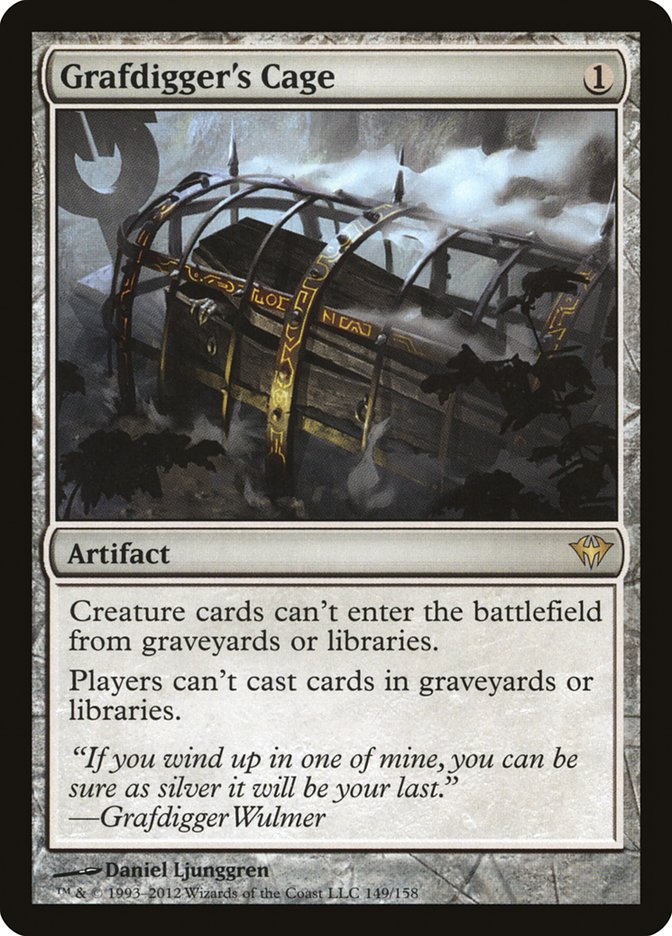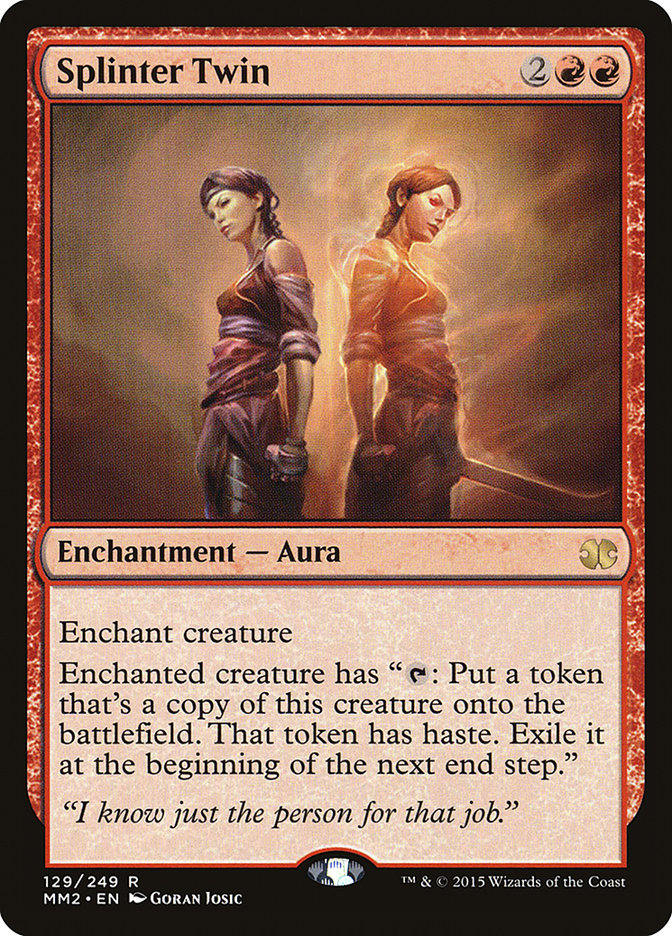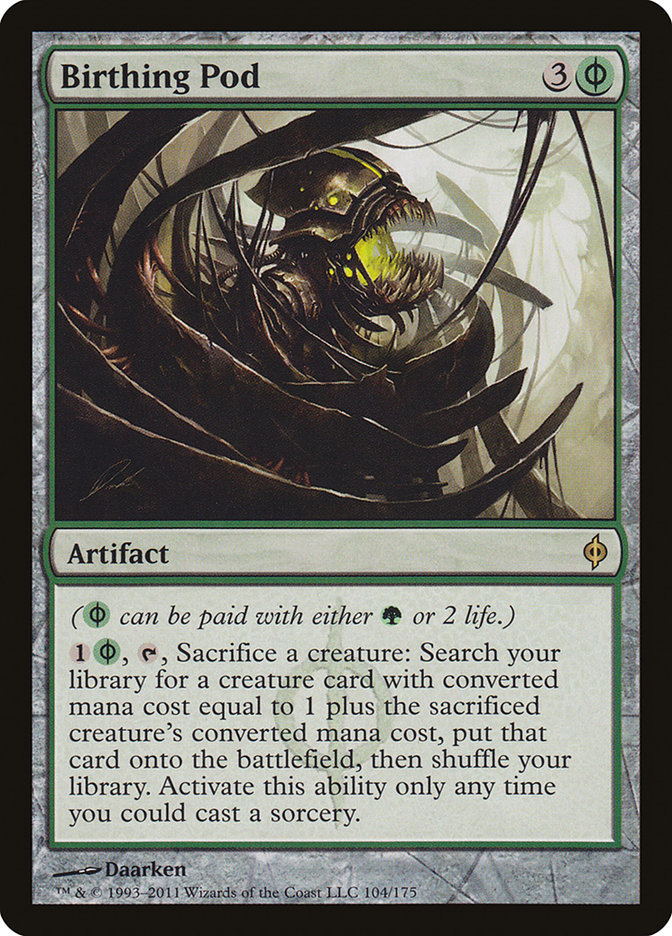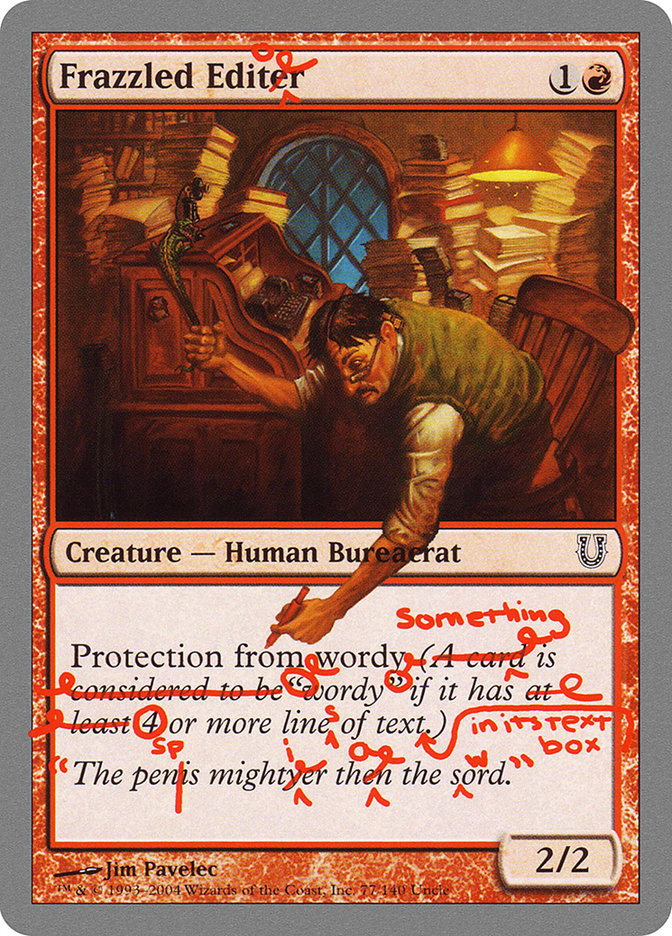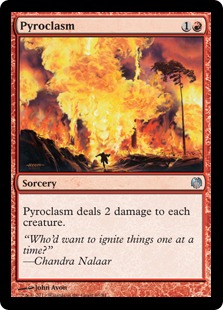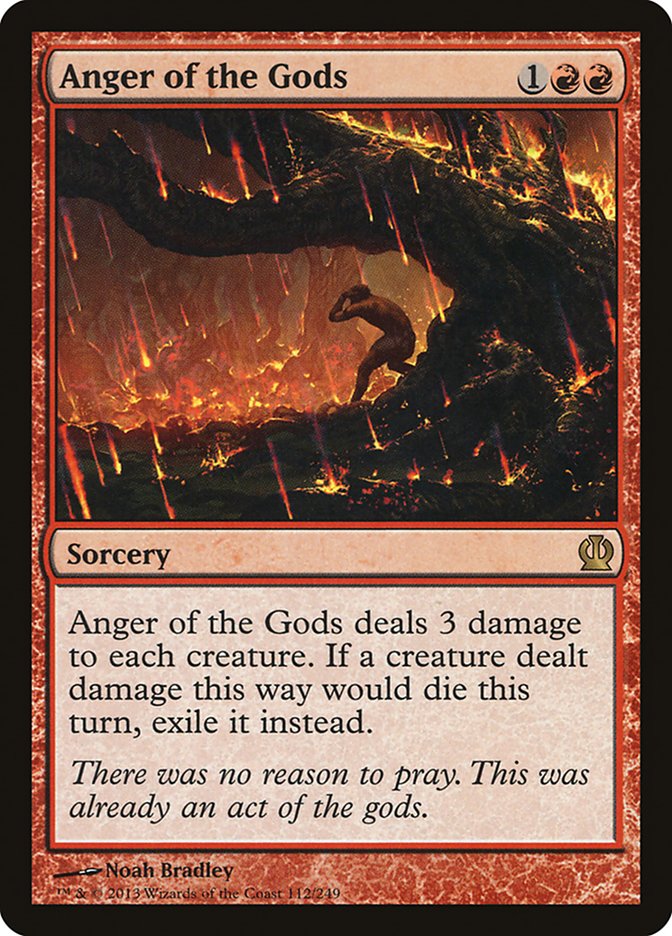Todd Anderson wrote about the deck two weeks ago. Tom Ross, Todd, and I brought it to the Open in Syracuse, putting two into the Top 8 and me taking home the trophy. Last weekend Tom made the Top 8 of #SCGINVI while I made the Top 4 of the Open.
Creatures (29)
- 4 Golgari Grave-Troll
- 1 Golgari Thug
- 3 Stinkweed Imp
- 4 Greater Gargadon
- 4 Narcomoeba
- 4 Bloodghast
- 4 Prized Amalgam
- 4 Insolent Neonate
- 1 Haunted Dead
Lands (19)
Spells (12)

Creatures (27)
- 4 Golgari Grave-Troll
- 4 Stinkweed Imp
- 2 Greater Gargadon
- 4 Narcomoeba
- 4 Bloodghast
- 4 Prized Amalgam
- 4 Insolent Neonate
- 1 Haunted Dead
Lands (19)
Spells (14)

Tom and I have certainly been fortunate over these two weeks, but after Syracuse we all expected both Dredge and Dredge hate to pick up in numbers. But to my surprise, most players came with the same two to four cards dedicated to the matchup last week, although they skewed toward the higher end of that range. With a better-tuned list and more experience with the deck, playing through the hate proved to be very doable.
However, my fear of the mirror led to me wasting four sideboard slots on Leyline of the Void. Everyone seemed to be aware of Dredge as an archetype to be reckoned with, but their reaction to it was far too mild, simply adding a card or two for the matchup and moving on. But as it turns out, that reaction was appropriate, since Dredge did not show up in appreciable numbers in either the Invitational or the Open.
It may seem clear that players were simply scared of the expected increase in hate, but in my experience with the deck, it takes a significant allocation of sideboard space to turn around the many lopsided pre-sideboard matchups Dredge has. You have to have your hate card on the first two turns of the game or risk being too far behind when it finally shows up, and you have to hope that your Grafdigger’s Cage or Rest in Peace actually stays on the battlefield, which is far from a certainty.
This kind of underreaction would never happen in Standard. When a new deck bursts onto the scene in that format, the hive mind immediately reacts, with some players tuning it and others tuning their lists against it. If the new kid on the block can compete when everyone has seen their tricks, then you know you have a true contender.
But Modern doesn’t operate this way. It’s a separate entity with its own constraints that cause its metagame to behave in unique but ultimately predictable ways. Today I will expound on some of these factors and how you can leverage them to your advantage during your next string of Modern tournaments.
Card Availability
Modern was created to be a format that was accessible for players but also let cards retain their value since they don’t rotate out. However, the increased popularity of the format in recent years, coupled with the low supply of older format staples, has created price spikes that strain most players, even when alleviated by reprints like Modern Masters.
What this means is most players spend significant time and money putting together one or two decks for Modern, and those are the decks they play unless they decide to sell out of it and work on building a new deck. These players are thus unable to switch decks in a week’s time, even if they would like to, given the circumstances.
Moreover, the decks in Modern have very little overlap between them outside of fetch- and shocklands and very expensive staples like Tarmogoyf. Someone who has Burn, Merfolk, or Affinity likely owns few if any cards for Dredge. The best option they have is to tune the deck they already own and hope that it’s good enough.
But if you were to put that same level of investment into Standard, you could own a majority of the format and have the ability to switch decks in real time as the metagame changes. Maybe you’d have to pick up a few cards you were missing every week or two, but you would own all the core cards, and those cards see play in different decks. Traverse the Ulvenwald is in B/G Delirium and Temur Emerge. Thalia’s Lieutenant can pivot between White/X Humans and Bant Humans. And like in Modern, the various two-color lands make their way into everything.
The lower barrier to entry in Standard leads to players being more fluid with their deck choice, whereas Modern’s high barrier necessitates more rigidity, so Modern is going to naturally be slower to adapt to new influxes in the metagame.
Deck Loyalty
The investment Modern players put into acquiring their deck(s) of choice not only leaves them unable to change decks, but also unwilling. That time and effort trading for the last Lord of Atlantis or saving up to buy Griselbrands, plus the time learning the ins and outs of your deck, bond you to it. Unlike Standard, you can keep playing your Modern deck forever.
As long as it doesn’t get banned.
The deck becomes a part of you. And that may not be a motivating factor for top pros, but the majority of people in a tournament, if any, are not pros and you should be metagaming for them.
And the more a player identifies with a given deck, the harder it is to get them to move away from it. I played Elves in Legacy well into the Treasure Cruise era when the field was full of cheap removal and card advantage. The comfort level and familiarity that comes with playing a deck for so long is a nice security blanket to have, but it can easily insulate you from the rest of the format and make you blind to the deck’s faults. When a deck becomes your baby, you have a problem, and Modern is a format where most everyone has a baby.
When a significant portion of the field is locked onto their pet deck, there is only so much movement that can happen on a weekly basis. All the change is occurring within a portion of the metagame that either hasn’t settled in on their deck for the format or has the resources and skill set to change decks more often. And even the latter group, Pros among them, has strong adherents to particular archetypes that make the prospect of a dramatic increase in Dredge from one Open to the next unlikely.
Difficulty Testing
This is another corollary to the card availability issue. Let’s assume that you already have your deck, but you want to prepare for Dredge or whatever new deck has entered the metagame. You gather your usual testing group and sit down to play, but everyone just has their own pet deck. You end up testing Merfolk against Jund for an hour before someone finds a Sharpie and a stack of commons to build a proxy deck.
Anyone who has tested with fully-proxied decks knows how much the quality of the testing suffers when you lack real cards. You miss interactions and have to waste time looking up Oracle text. The games don’t feel the same and you’re not as engaged, leading to worse play across the board from sideboarding to mulliganing.
These issues are exacerbated with a technically complex deck like Dredge. You have to know exactly what you have in your graveyard, and so does your opponent. You have to remember that Prized Amalgam is going to enter the battlefield on your end step, triggering a subsequent Prized Amalgam to enter on your opponent’s end step. If your opponent forgets about that Conflagrate you milled on turn 2 because it looks exactly like every other Plains scribbled with black ink, the entire game spirals out of control.
Honestly, testing like this is detrimental, since it provides a false perspective on the matchup for both parties. And without access to a copy of the deck, many players are left to theorycraft a solution, which invariably ends with adding a couple of sideboard cards and calling it a day. But the same complexity that makes Dredge difficult to play makes it difficult to play against.
You have to do what you can to get relevant testing data. The fact that most players don’t follow through on this means that it takes a few tournaments of losing to a deck for the metagame to properly prepare and react. As players get more reps against Dredge simply by running into it in tournaments, they will gain a greater understanding of the matchup and determine an appropriate plan should it continue to perform well in tournaments.
Increased card availability in Standard means that players are able to test new decks on short turnaround and do so with complete decks to obtain relevant data. A testing group should be able to put together a solid testing gauntlet with minimal trouble, but between the lower card availability, smaller overlap between decks, and sheer volume of relevant archetypes, testing Modern is much more difficult.
Sideboard Strain
Diversity is a hallmark of Modern. Rarely does a deck top ten percent of a tournament field, and on any given weekend, there are twenty or more decks that could win without anyone being too surprised. As I noted earlier, that diversity makes testing the format more difficult, but it also makes deck construction more difficult. You only have fifteen sideboard cards, and the cards that are good against Jund, Affinity, and Dredge are very different. Building your sideboard in Modern is a matter of picking your poison and hoping to dodge matchups that you are unprepared for. It’s also a matter of balancing your sideboard to be prepared for as much as possible.
This balancing act leaves little space for any given deck, so realistically there wasn’t much room for the amount of Dredge hate to increase for last weekend. Sure, you can cut four cards for a playset of Leyline of the Void, but given all we know about how slow people are to adopt new Modern decks, is that decision prudent? I would argue that no, it’s not. You can add a card or two and hope that it’s enough, maybe shift your Pyroclasms to Anger of the Gods and similar upgrades, but that’s about it. Dredge is highly unlikely to be a large enough portion of the metagame to warrant excessive hate.
And as it turns out, this line of reasoning was correct. Very few people adopted Dredge and several of my opponents in the Open were hoping to dodge the matchup, either due to lack of a proper sideboard plan or lack of experience in the matchup. They were correct to not overreact, whereas in Standard they would be hopelessly behind the metagame.
Great Expectations
Keep this in mind moving forward: you should be more tempered in your response to a new deck in Modern. Dredge didn’t show up in the numbers many expected last weekend and the same will likely happen to Elves this weekend at #GPINDY. You’ll see an uptick in sweepers like Anger of the Gods, Pyroclasm, and maybe even things like Golgari Charm and Zealous Persecution. But how many people are actually going to pick up Elves? And how many slots can you afford to cut from your Affinity or Jund plan? It’s probably less than you think.
But this issue isn’t a problem with how we approach the format. It’s an issue with how we perceive it. Standard and Modern are separate entities, and we need to do a better job of treating them as such. Standard is a fast-paced format that rewards players for their ingenuity and adaptability. Modern rewards them for staying the course and having intimate knowledge of their deck so that even when something unexpected happens, they can reassess on the fly.
Adjust your mindset to the format you are playing, and your results will improve.
I’ll be attending #GPINDY, and unless something drastic happens in the next few days, I’ll be registering Dredge. Do you want to beat me or the player sitting across from you in Round 9 playing Ad Nauseam? Can you beat both? Don’t forget about Jund, Infect, and Affinity…
It’s the Modern player’s dilemma.


